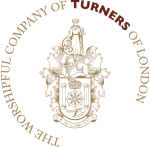Turning is the craft of using a lathe – the mother of all machine tools.
From the earliest days the work-piece, usually wood, was held between two centres, one of which was driven to revolve the work-piece. The rotational power came from a long whippy branch driven down by the operator’s foot – the pole lathe, as in the illustration, or from a bow pushed and pulled by the operator’s arm; the bow lathe. Both types are still in use throughout the world today and there is a growing interest, in the UK, in pole lathe turning as a country craft.
Over the years, these machines were improved and augmented by the use of metal and the cranked foot pedal, allowing continuous one way operation and, finally, by the introduction of the electric motor.
As the work-piece revolves, cutting tools, such as chisels and gouges, are pressed against it to produce a rounded shape, the dimensions of which are varied to produce the finished article.
With the coming of the Industrial Revolution, and the machine age, lathes became bigger and more complex and the harder metal work-pieces required the use of fixed cutting tools. These are advanced towards the work-piece by screw threads often, themselves, power-driven. Today, the screw-cutting lathe is an essential item in every machine shop.
Today the ultimate lathe is computer controlled with the ability to self load work-pieces, to turn the piece to complex shapes determined on the computer using a variety of cutters, before ejecting the finished component, all without direct handling.
From early in the 17th century the concept of ornamental, as opposed to plain, turning developed. Here the work-piece is static, rotated slowly or in measured increments, either concentrically or eccentrically, whilst being shaped by a fast rotating cutting tool. The result is an ornamental finished shape unobtainable by simple rotation. In its simplicity, plain turning turns a square, or irregular, shape into something round. Ornamental turning turns something round into something square (or many other complex shapes).
Ornamental lathes were much developed in the late 18th century by the Holtzapffel family, who provided the Company with many generations of eminent members and their five volumes on all aspects of turning are often referred to by devotees of the craft as “The Bible”. In the late 19th century, ornamental turning was much taken up by the nobility and the gentry as a hobby.
Examples of the different, and historic, lathes can be seen in the Science Museum in London. A great many turned articles are illustrated in the definitive book on things made of wood entitled Treen by the late Edward Pinto, a member of the Company for many years.
Today, as always, the Company supports and encourages all aspects of turning.
